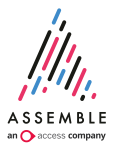Volunteer management system (VMS) vs CRMs – do you need a VMS?
As a non-profit, you will no doubt appreciate the importance volunteers have on the day-to-day delivery of your organisation’s objectives. Where volunteer management is concerned, you may currently use CRM software, but would volunteer management software improve these processes and enhance the volunteer journey?
In this article, we provide an insight into how volunteer management software could be a better option to manage your volunteers more efficiently. Read on to discover how a CRM can support your processes, what a volunteer management system actually does in comparison, and the benefits of integrating your CRM with a VMS for the best of both worlds.

How does a CRM support your processes?
Firstly, it’s important to understand how a CRM supports your day-to-day processes.
Given that a CRM is a one-way communication product that tracks the interactions your donors and volunteers have with your organisation, it provides a limited insight to help support the management of your organisation’s responsibilities around volunteers and volunteering. A CRM commonly tracks:
- Donation history – Informing you of who made the respective donation, the amount donated, the date it was made, and the campaign that led to it
- Communication history – Including all interactions such as emails, phone calls, meetings, and event attendance
- Sign-ups – Including either event attendance or an initial volunteer role application
It’s also important to acknowledge that there can be crossovers between data, as some donors can become more actively involved as volunteers. For example, someone may have initially donated to you and then later applied for a voluntary role via a sign-up form. While a CRM may track these interactions, it won’t be able to support the entire volunteer journey from initial application through to the training required to be undertaken, and even down to the detail of the shifts they have signed up for on an ongoing basis.
Put simply, a CRM cannot be used where the management of volunteers is concerned. Instead, a VMS can provide a comprehensive solution.
Find out more about the volunteer journey
What is a volunteer management system?
As an organisation with volunteers integral to your activities, it’s crucial that you successfully recruit, manage, and subsequently retain your volunteers. Volunteer management software supports these key aims by ensuring that your volunteers are engaged and supported throughout each step of their respective volunteer journey.
VMS software consists of specialist features that optimise the volunteer journey from initial engagement through to successful recruitment. During this process, the respective volunteer should experience growth and development within their role, contributing towards a positive ending over a long-term basis.
The key steps are outlined below.
Step 1 - Recruiting volunteers
Attracting prospective volunteers to your organisation's opportunities is the first step towards successful recruitment. For this to be possible, it’s crucial that you can gain the volunteer’s attention with key details and encourage role applications.
With a volunteer management system, it allows for the management of application processes and requirements based on the safe engagement of volunteers in different roles. In addition, it ensures that all applicants follow a consistent recruitment process that is appropriate to the role they are applying for.
Top volunteer recruitment features can include:
- A custom branded microsite that advertises vacant roles – each with a unique shareable link
- Clearly defined opportunities with role descriptions, required skills, commitments and benefits
- An applicant portal to track progress through the recruitment journey
Find out how to create an engaging volunteer opportunity
Step 2 - Managing your volunteers
Once your volunteers are on board, they should then be provided with the sufficient level of support to help fulfil their role(s). This can include information surrounding relevant onboarding, a formal induction, and training material that assists volunteers to use the relevant processes for their role.
Opting to use this software can therefore allow you to:
- Manage rotas and volunteer shifts
- Assign tasks to be completed
- Track training completion
Find out more about how to keep volunteers engaged
Step 3 - Retaining your volunteers
Finally, retention is of paramount importance to ensure your organisation doesn’t experience a decrease in volunteers. A ‘thank you’ can go a long way to make sure volunteers feel valued, but just as important is showing the difference that they make as part of a wider team.
While a fundraising CRM focusses on the financial contribution, a VMS helps volunteers engage actively in your organisation’s aims and objectives along with embedding your values and culture. This is encouraged by an environment that allows a community whereby volunteers can frequently engage with each other for peer support.
Volunteer management software offers this personalised approach with:
- Relevant communication via news and impact articles, along with internal messaging capabilities
- Volunteer recognition to highlight milestones via virtual accolades and certificates
- Visual prompts to encourage further volunteering opportunities
Read our top 5 tips for a successful volunteer engagement strategy
What are the benefits of integrating a CRM with a volunteer management system?
Unlike the one-way communication of a CRM, a VMS facilitates a two-way relationship that helps to support the entire volunteer journey.
Firstly, this consists of the responsibility that your organisation has to the volunteer, by ensuring they are onboarded safely, trained to the required standard, and remain informed throughout their respective journey.
From the volunteer’s perspective, the VMS also promotes accountability of their own responsibilities through the management of their tasks, training requirements and rota.
Through integration, you would be able to combine the unique functionality associated with both pieces of software via a single supporter view. This would provide a more holistic view of your processes, and based on this data, will be able to make informed decisions that will enhance the overall experience for both donors and volunteers.
The benefits of integration are outlined below.
Improves both the volunteer and donor experience
Integrating this software can help to support each other and lead to an enhanced donor and volunteer experience.
Quite often, your donors may be interested in the opportunity to become a volunteer. So, why not encourage this transition by broadening your support via the holistic view these platforms provide?
When someone becomes a volunteer, an integration between these two pieces of software will ensure that the relevant data is kept accurate and up-to-date. From here, either the ‘Supporter Care’ or ‘Communications’ teams can instantly determine that they are in fact a volunteer, their specific role, and how long they have been in this role. With this information, it in turn allows for more tailored and nuanced supporter journeys to be strategised.
Accurately measures value
This software is able to accurately measure impact from both a quantitative and qualitative perspective which can be shared through reporting functionality.
A CRM contributes towards the former, as you can drill down into key insights of your supporters. This data provides an idea of their profile, as you will be able to view information such as the type of communication they have engaged with and their personal details. Despite this, your CRM won't be able to share specific, in-depth volunteer activity data such as their volunteer history, the training they have undergone, and the tasks and shifts that have been assigned. This is where a VMS can fill the gaps of your CRM's shortcomings by providing a complete view of your volunteers and their activities.
Additionally, a VMS provides a more qualitative measurement of volunteer involvement. Once a volunteer has completed a task, as well as collecting measurable outcomes - like how many bags of shopping they delivered - you can also find out how much they enjoyed the volunteering activity, how you can make it better or what else they’d like to get involved with.
Manage the entire volunteer journey
While you can manage basic volunteering data within a CRM, it will significantly limit your oversight of compliance, safeguarding and good volunteer management with the inevitable knock-on impact to the volunteers’ experience.
Opting to add a VMS and then integrating it with your CRM allows the support of a good volunteering experience and much improved supporter journey.
At Assemble, we encourage you to research extensively and weigh up your options before investing in a piece of software. But why not start with us? Whether you wish to find out more about costs surrounding a volunteer management system or simply have any questions after reading this guide, we are readily available to help.
